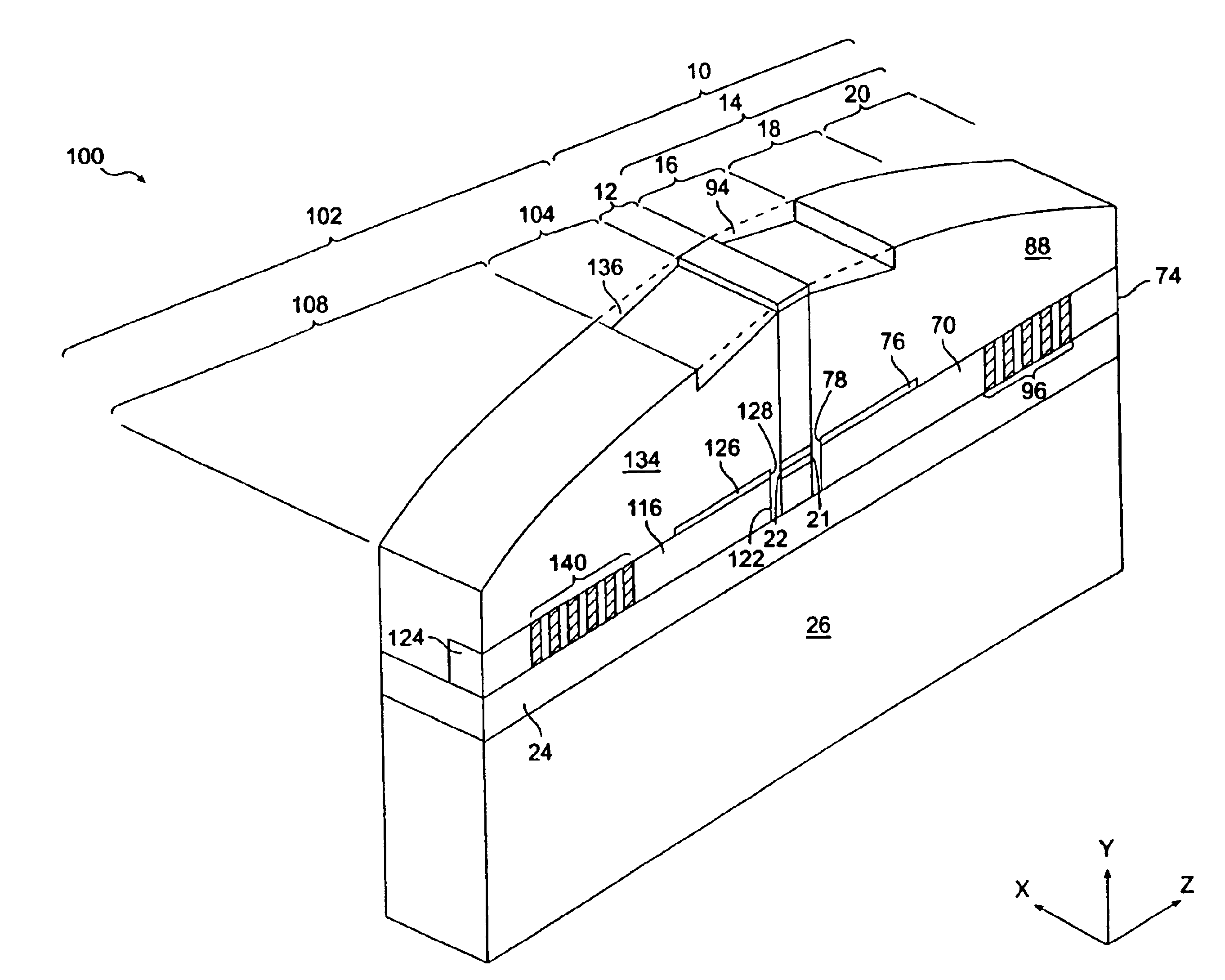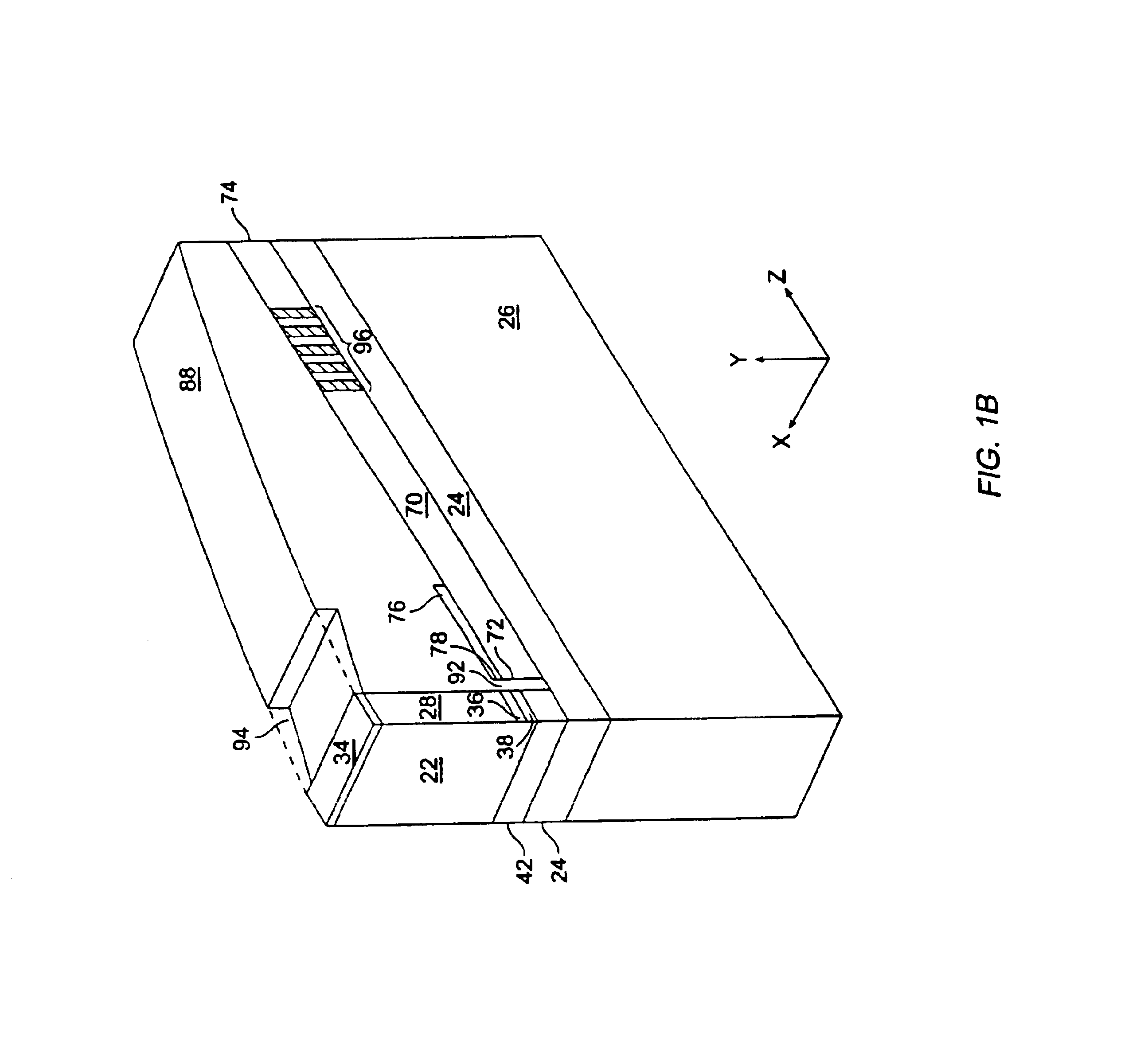Thermally wavelength tunable lasers
a wavelength tunable laser and thermal laser technology, applied in semiconductor lasers, instruments, optical elements, etc., can solve the problems of increasing optical loss and adding optical noise, tuning by heating, and introducing current, so as to achieve high spectral selectivity, high spectral selectivity, and high spectral selectivity
- Summary
- Abstract
- Description
- Claims
- Application Information
AI Technical Summary
Benefits of technology
Problems solved by technology
Method used
Image
Examples
first embodiment
[0042]Referring now to FIG. 1A, there is illustrated a laser 10 that is highly wavelength tunable and has high spectral selectivity. The tunable laser 10 includes a gain means 12 which provides optical energy and a passive section 14 which processes the optical energy received from the gain means 12. The passive section 14 includes a taper section 16 which couples the optical energy to a first waveguide, a phase control section 18 which slightly shifts the Fabry-Perot resonant cavity modes associated with the tunable laser 10, and a reflector section 20 which may reflect optical energy dependent upon the wavelength of the optical energy.
[0043]Most generally, the gain means 12 provides sufficient optical energy to overcome the losses associated with the components that make up the tunable laser 10 and to create oscillation within the tunable laser 10. The gain means 18 includes a first facet 21 (FIG. 1D) and a second facet 22. The second facet 22, most preferably, has a highly reflec...
second embodiment
[0057]Referring now to FIGS. 2A and 2B where like elements are designated with like numerals, there is illustrated the tunable laser 100. The tunable laser 100 includes the tunable laser 10 and, adjacent to the second facet 22 which is now AR coated, a second passive section 102. The second passive section 102 includes a second taper section 104 and a second reflector section 108 which are similar to those corresponding sections and elements within those sections in the passive section 14, described above.
[0058]Referring now to FIGS. 2D and 2E, embodiments of the heaters and the waveguide associated with the second reflector section 108 are shown and are similar to the one shown in FIGS. 1E and 1F. Referring now to FIG. 2D, the cladding layer 24 is etched to produce pedestals 110, 112, and 114 and upon these pedestals are, respectively, deposited a second core 116 and heaters 118 and 120. As best shown in FIG. 2B, the second core 116 includes a first end 122 with an AR coating to pr...
PUM
 Login to View More
Login to View More Abstract
Description
Claims
Application Information
 Login to View More
Login to View More - R&D
- Intellectual Property
- Life Sciences
- Materials
- Tech Scout
- Unparalleled Data Quality
- Higher Quality Content
- 60% Fewer Hallucinations
Browse by: Latest US Patents, China's latest patents, Technical Efficacy Thesaurus, Application Domain, Technology Topic, Popular Technical Reports.
© 2025 PatSnap. All rights reserved.Legal|Privacy policy|Modern Slavery Act Transparency Statement|Sitemap|About US| Contact US: help@patsnap.com



